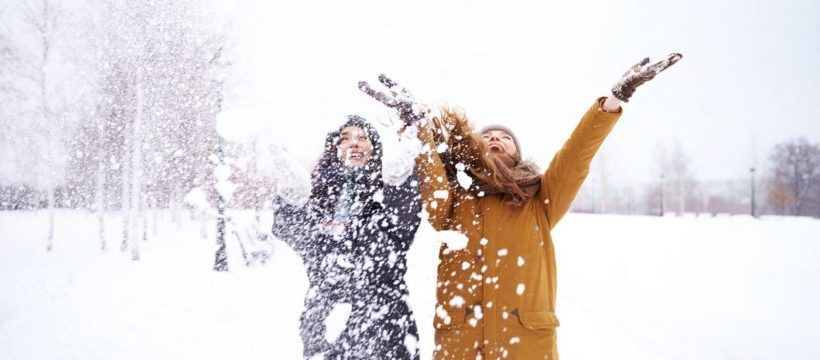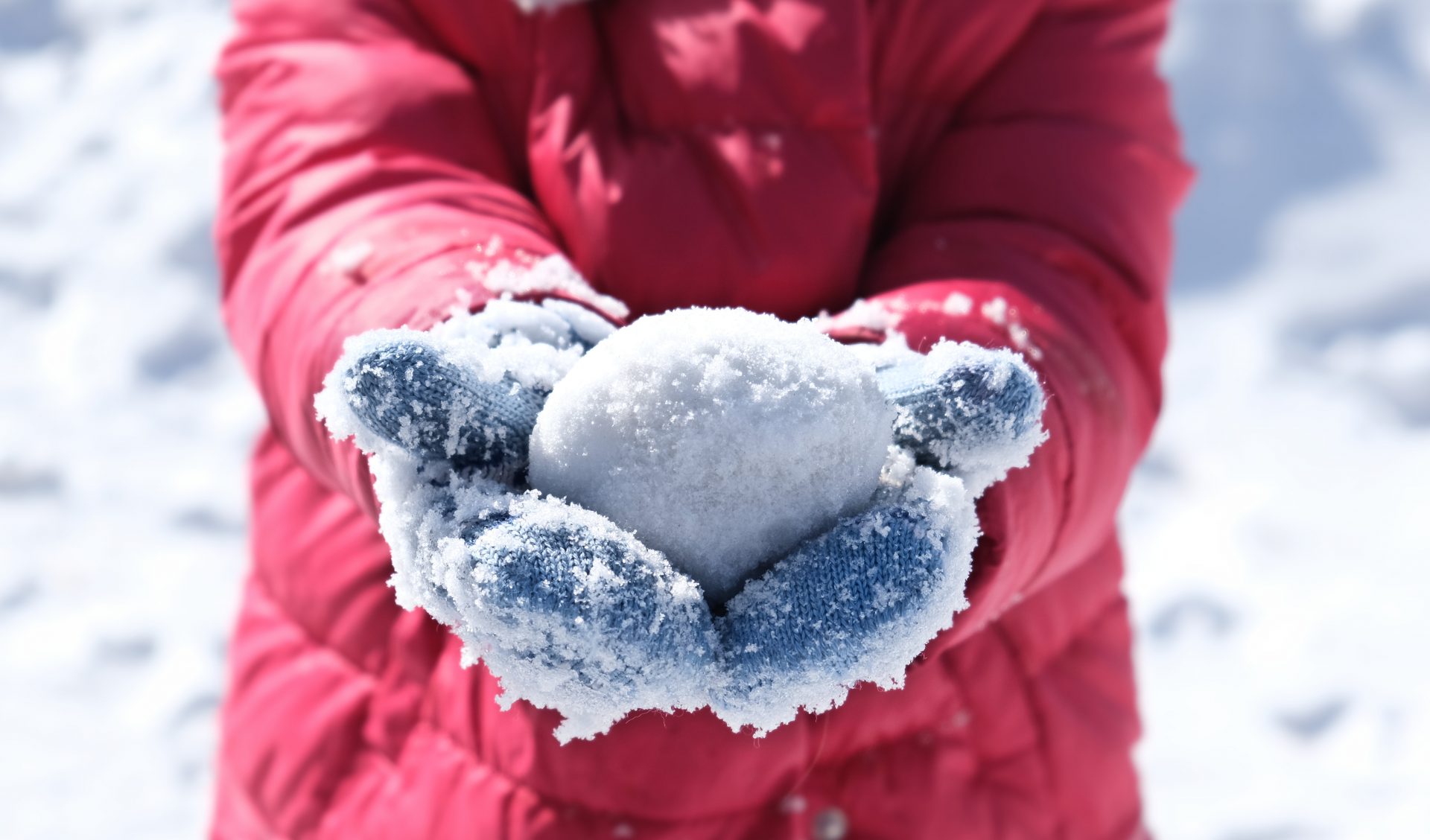Written by Katie Rosseinsky
There’s something about snowy weather that takes us straight back to childhood and leaves us filled with joy. We asked the experts to delve into why snow scenes boost our moods.
The winter magic of snowy weather never seems to wear off. There’s something about opening your curtains to see the world outside dusted in white, your street instantly transformed into a scene from a Christmas card, that can make the most cynical of hearts soar.
Even when our joy is tempered slightly by the mundane concerns of adulthood (will my train to work be cancelled? What does this mean for Christmas deliveries? Will I be able to make it down the road to the shops without stacking it spectacularly? And perhaps most pressingly right now, how can I warm up the house?) the prospect of a snow day still fills many of us with a childlike delight.
Winter, with its dark mornings and long nights, certainly isn’t known for its mood-boosting properties: in fact, the colder months are often associated with seasonal affective disorder, a mental health condition that can leave you feeling low and lethargic, and may be linked to reduced exposure to sunlight during these shorter days. And yet there are a whole raft of psychological studies that suggest snow is beneficial to our mental wellness.
Snow’s potentially uplifting properties could be linked to how it reflects the light. Whereas ground without snow reflects back only about 20% of light, Stockholm University psychology researcher Arne Lowden told Radio Sweden last year that snowy ground will reflect “almost 95% of all light”. Brighter light is linked to a better mood, as it sends signals to the brain regions involved in regulating our emotions, while light scarcity has been associated with lower mood and “depressive symptoms”.
This wintry weather changes our behaviour too, encouraging us to put on our wellies and woolliest jumpers and get outside to make the most of the frosty conditions. Being outdoors in general is often associated with better mental health: a 2010 study from the University of Rochester found spending more time outside made people feel more resilient, with greater vitality and better physical wellbeing after just 20 minutes in nature.
The novelty of snow often galvanises us to get out for a walk or indulge in building a snowman – put simply, it makes us more likely to get out and get active. “Snowfall may present an opportunity for us to play ‘like children’ outdoors, when we can just go out and enjoy ourselves in a non-self-conscious way,” says Noel Bell, psychotherapist and spokesperson for the UK Council for Psychotherapy. “In this way, snow can help us to release our inhibitions. Since snow is usually only around for a limited period of time we might feel compelled to enjoy the moment and become more mindful as a result.”
According to recent research, getting out in the snow might have a positive impact on your body image too. Psychologists from the Medical University of Silesia and Anglia Ruskin University in the UK asked 87 women to go for a walk in small groups in a snowy woodland last year, and told them to complete a questionnaire before and after.
The questions assessed how the participants were feeling about themselves and their bodies, with the women answering on a scale of one to five, where one meant “strongly disagree” and five meant “strongly agree”. Before their wintry walk, the average score was 3.61, whereas after the snowy jaunt, it rose to 3.9, implying “significantly higher” body image, the researchers said. “It is possible to explain these findings by drawing on attention restoration theory, which suggests that natural environments have the capacity to restore depleted psychological resources,” the authors explained.
There’s also a romanticised sense that we’re living out the winter ideal: we associate snow with picture-perfect images that “we might see on TV or in films… particularly this side of Christmas”, says Dr James Newman, chartered psychologist and psychology academic at Sheffield Hallam University. The nostalgic element of these images, taking us back to our childish excitement at the prospect of building a snowman or speeding down a hill on a sledge, can generate positive emotions too.
“It may be a chance for a connection to or reminder of childhood experiences,” says Newman, and it’s all the more precious to us because “it’s something that doesn’t always happen really frequently” – it’s familiar because it’s part of a seasonal pattern, but it’s detached from the day to day grind. It might remind us, he adds, of snowy days from years gone by, unlocking positive memories of a time when maybe parents can’t or don’t go to work, and kids didn’t have to go to school.
“Seeing it snow can tap into the carefree, childlike part of ourselves,” explains Dr Elena Touroni, consultant psychologist and co-founder of The Chelsea Psychology Clinic. “In psychology, we sometimes refer to this as ‘happy child mode’ – the part of our inner child that helps us play and have fun. Many of us remember seeing – and playing – in snow for the first time when we were younger. And so seeing the snow today can tap into the same feelings of joy and playfulness we experienced then.”
Our need for fun and play, Touroni adds, doesn’t disappear in adulthood, but sometimes it can get lost amid all the other responsibilities we have in our lives: “Without play, life can feel heavy, and it can lead to feelings of low mood, as well as burnout.”
By reminding us of our more playful selves, snow can tap into more positive emotions and helps us feel connected and carefree. “Positive experiences build positive memories that one can try to resurface when you feeling low, through meditation and reflection,” adds Smriti Joshi, lead psychologist at Wysa. “Remembering that joy we felt as a young child can also act as a motivator on dull days to get up and go out and recreate similar experiences, by taking five minutes out to just be silly.”
The weather forces us to (temporarily) embrace a slower tempo and put some of our worries on hold too. “Snowfall gives us a sense of things slowing down,” Bell says. “This can represent a useful pause button when we might be stressed dealing with a busy pace in our lives. The workday might be slower and we could have an opportunity to take stock of what is happening in our lives.”
Anyone for a snowball fight?
Images: Getty
Source: Read Full Article

